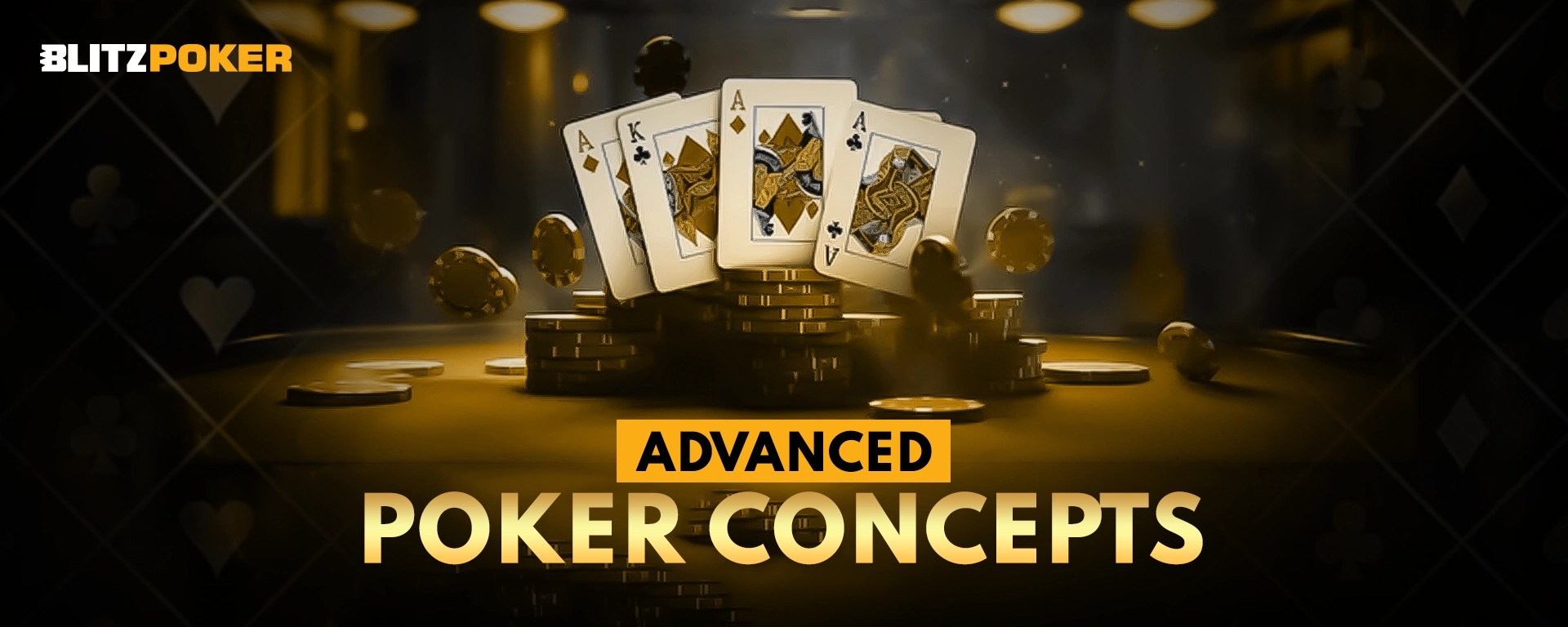Advanced Poker Concepts
Are you an experienced poker player looking to find that extra edge to outplay your opponents? You’ve come to the right place. In this blog, we’ll dive into advanced poker concepts designed to give seasoned players like you the upper hand. You’ve probably mastered the basics and maybe even some intermediate strategies. But there’s always room for improvement, and that’s where these advanced tips come in. Some of them might be familiar, but others could be new and just what you need to enhance your game.
We’ll cover various aspects of advanced play, from subtle tweaks in strategy to deeper psychological insights. The tips you haven’t yet explored could be your key to gaining that missing edge and dominating the table. So, let’s get into the nitty-gritty of advanced poker and help you sharpen your skills even further. Whether it’s a small adjustment or a major revelation, there’s always something new to learn in the world of poker. For the ultimate online poker experience, check out BLITZPOKER and put your new skills to the test.
Run Villain Analysis
At higher levels, we need to analyse our opponents’ games closely. We should look for more ways to take advantage of their weaknesses.
The skills for this are similar to those needed for database analysis. Just like we check our own database for mistakes, we should examine the hands we’ve gathered from our top opponents.
If you haven’t analysed your own database, it will be hard to do this for opponents. So, get that tracking software ready!
Analyse Table Setup
Choosing the right number of tables and arranging them well is essential. Playing too few tables can make us bored and lower our hourly rate.
Playing too many tables can cause stress and also lower our hourly rate. We need to find the perfect balance where we enjoy playing and make good decisions, while still playing many hands.
Even if we’re happy with our current table count, we should see if we can handle more after using other tips in this guide. One way to do this is by mastering basic postflop strategy and using table scripts.
Utilize GTO Solvers
A GTO solver is a tool that calculates a balanced strategy for each range in a specific game scenario. If you haven’t used a GTO solver before, now is a great time to start.
Solvers are straightforward to use but can be tricky to use effectively. Many players err by creating overly complex models with very specific scenarios. In reality, a solver is better for enhancing your overall understanding of theoretical play rather than just focusing on one particular situation.
If you’re already using a solver, consider how you might improve the efficiency and relevance of your solver work.
Preflop Squeezing
A squeeze is a preflop 3-bet made after an open raise and one or more callers. Raising after someone open-limps with one or more players limping behind is not a squeeze. Similarly, a 3-bet directly after an open raise isn’t a squeeze either.
The term “squeeze” is used because: a) You aim to “squeeze out” dead money, ideally from weak hands. b) The original raiser and caller(s) are “squeezed” between two opponents, making it hard for them to defend.
The main goal of the squeeze is to make your opponents fold and win the pot preflop without contest.
Using a Neural Network
A neural network works like a “machine learning” poker solver. Instead of solving poker with pure calculations, it plays many hands against itself to find the best strategies.
You can join an existing poker neural network. If you’re daring and know some coding and machine learning, you can try to make your own.
Advanced Poker Concepts: Analyse Rake and Game Quality
Sometimes, top players just break even, but average players can make a steady income. Why? Top players compete against other top players, while average players choose easier games.
If our goal is to earn as much as possible, we should pick games that help us do that. Look at the games you’re playing now.
- What’s the rake structure like?
- How tough are your opponents?
- Can you play multiple tables easily?
Sometimes, simply switching to easier games can double our earnings overnight. We don’t even need to get better; we just play against weaker opponents and make more money.
Look at Bankroll Management (BRM)
A lot of advice on bankroll management (BRM) says we should always have enough buy-ins for the limits we’re playing. More buy-ins mean a lower chance of going broke, so it’s easy to think more is better.
But playing with too much money can be a problem. It stops players from moving up limits quickly. A skilled player might stay at lower limits too long, trying to get more buy-ins before moving up.
Maths actually supports taking small but very aggressive chances.
Check your BRM strategy. Make sure you’re not playing with too much money and missing out on moving up faster.
Showing Your Cards
When you win a pot before a showdown, you can either hide your can either muck your cards or show the hand before you muck which reveals the hand you had.
Most online poker rooms offer this choice with buttons popping up after you win because your opponent folded.
Many beginners show their hands, but this is usually a mistake. Why? Because you give free info to your opponents about your actions with that hand, helping them read your future moves. The main rule is not to show your hand unless you have to. Don’t give extra info if you don’t need to.
Even if you don’t use this tactic, you should know why others might. When an opponent shows their hand, pay close attention. Study their actions to spot betting patterns for future hands. But remember, those poker patterns might not always repeat. Understand why someone might show their hand.
